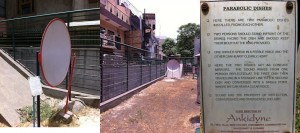 While you typically don’t need an agent when submitting a short story collection to small presses, acquiring one sooner than later can be extremely useful — especially when it comes to contracts. Small—and university—press contracts are notorious for favoring the press and not the author. And should you land the good fortune of having a producer approach you to acquire the stage or film rights, a literary agent will be absolutely crucial as a smaller press will often not have the expertise or resources to negotiate such a deal. At the pre-publication stage this may seem like a far-fetched possibility, but you’ve got to be prepared that it can happen—as it did for me when indie filmmaker Hannah King asked to option my debut collection, Train Shots, for film.
While you typically don’t need an agent when submitting a short story collection to small presses, acquiring one sooner than later can be extremely useful — especially when it comes to contracts. Small—and university—press contracts are notorious for favoring the press and not the author. And should you land the good fortune of having a producer approach you to acquire the stage or film rights, a literary agent will be absolutely crucial as a smaller press will often not have the expertise or resources to negotiate such a deal. At the pre-publication stage this may seem like a far-fetched possibility, but you’ve got to be prepared that it can happen—as it did for me when indie filmmaker Hannah King asked to option my debut collection, Train Shots, for film.
- Do aim to publish stories in the best journals you can before assembling a collection. This serves as a vetting process, for one, showing you which stories resonate most strongly with readers and editors. But just as importantly, when your collection is published, you can then share the news with those journals and ask if they might be up for featuring an interview, book review, or guest post on their blog, tweet/share, etc. Most will be happy to do so.
- Six months before the book is published, reach out in a cordial and professional manner to not only those journals, but friends, alumni, and colleagues who might be up for interviewing you and/or reviewing your book, or who know someone who will. Again, the majority of them will be all too happy to oblige, but following up with them about two months before the publication date is key. You want your publicity to hit the month the book is launched. Pre-orders are crucial, as they give the press an indication of what the print run should be. Make a list of your “warm market” (friends, relatives, neighbors, co-workers, etc.), and politely follow up with them to make sure they’ve ordered. Personalized, private messages to individuals or small groups whom you’ve connected with at conferences, residencies, and retreats are most effective.
- Get your book into the hands of “Connectors” in the community, as described by Malcolm Gladwell in The Tipping Point: individuals who operate at the crossroads of different social, cultural, professional, and economic circles. These are the people who seem to know everybody – they have a vast number of friends and acquaintances. Connectors will talk up/pass along your book to others outside your circle, through which new opportunities may arise (readings/talks, collaborations, stage adaptions, film options, etc.) that will bring your work to a larger audience.
Vanessa’s new book, Juventud, is available for preorder from Curbside Splendor Publishing. Watch a trailer for it here and support Vanessa on her national book tour here.


